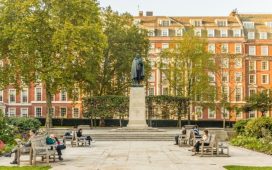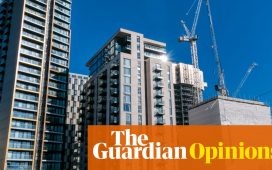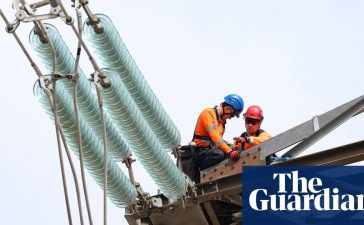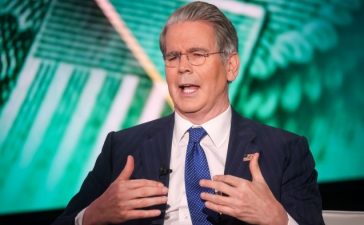In 2022 we were describing China’s property crash as “a slow-motion financial crisis”. In retrospect it wasn’t all that slow-motion. The chart below is from Barclays’ 2024 Credit Outlook:

More than half of China’s top developers followed Evergrande into default after Beijing moved in 2020 to restrict new borrowing, unravelling a funding model that was built on dollar-denominated high-yield debt and bankrolled by local government financing vehicles.
Since the beginning of 2020, at least 60 China property issuers with more than $140bn in outstanding dollar bonds have defaulted, Barclays calculates:

What now? New foundations are needed for the rebuild, paid for with principal haircuts, bond issuance and debt-for-equity swaps. However, “many of the debt plans proposed by developers so far have been intended to buy time, rather than to meaningfully improve their capital structures to more sustainable levels,” says Barclays.
Too many Chinese privately owned developers remain riddled with debt and lack an equity buffer. Off-balance sheet and contingent liabilities are also common.
Liabilities across the sector stood at 87 per cent of assets at the end of June, compared with asset-to-liabilities ratios of 69 per cent for the Chinese state-owned builders and 41 per cent for the Hong Kong peer group, according to Barclays. China’s “red three lines” credit policy caps debt-to-asset ratio at 70 per cent, though it was relaxed in January.

With so little equity on the balance sheet, a further 20 per cent decline in the book value of property and plant inventories on average would be enough to cause wipeout, Barclays calculates. (The sample above includes Country Garden and Evergrande, both of which were deep in negative equity at the half-year. The former defaulted in October and the latter might be liquidated next month.)
Measuring assets is another problem. The high contract liabilities seen in the chart above are because developers pre-sell property and flip the cash into the next project. The actual unsold property on their books might therefore be lower than reported, which drags both on potential recovery values in liquidation and continuing cash flow if the business can be saved.
Note also the very high levels of payables, which push bond creditors further back in the queue, and their relative lack of tangible assets. The sector is virtually designed to evaporate on the first signs of bust. Here is the consequence.
What kind of a debt haircut is needed to save a fly-by-night property developer that lacks cash flow, equipment, and property? It’s impossible to say, so “more than one” is a reasonable answer. Averting each short-term liquidity crunch won’t solve a solvency problem but it kicks the can down the road, which is probably the most that can be hoped for right now.
Back to Barclays:
Stripping out Evergrande, we estimate that an average 30% haircut of the total interest-bearing debts for the other 26 POE developers may be required to: 1) improve EBITDA coverage ratios to more than 1.5x; and 2) lower debt/EBITDA ratios to 8x or below, assuming 6% average interest costs, 15% EBITDA margin, and normalised contracted sales at the 2022 level.
Moreover, if only offshore creditors have to bear the cost of the restructuring (ie, no haircuts on onshore debts), then we estimate the potential debt haircuts would need to increase to around 70% for offshore debts, assuming offshore debt accounts for 50% of interest-bearing debts.
The big additional complication is, well, China. In September, Chinese regulators pushed Evergrande closer to liquidation by blocking a plan to restructure offshore debt with new issuance. Can-kicking exercises by other developers is similarly beholden to Beijing, even when it works, and right now it often doesn’t.
Modern Land completed a restructuring a year ago, then last month asked to amend terms ahead of the year-end due date on its first amortised bond. Powerlong and KWG have both defaulted having agreed term extensions last year, while China South City has asked for grace three times since its 2022 restructuring.
What could go right? Barclays uses as a case study Sunac, a top-three developer whose 2021 sales were equivalent to nearly $85bn. Sunac defaulted in April 2022, beginning a 19-month restructuring process involving $10.2bn of offshore debt from which it exited last month.
Creditors voted overwhelmingly in favour of Sunac swapping debt for a clutch of equity-linked instruments that have delivered to recent buyers a quick profit. Key to the proposal was to give creditors the ability to switch back and forth between equity and debt claims, so they could gain exposure to a Chinese property recovery story as well as an easy exit.
It won’t be long before Sunac needs to kick the can again, however. There were no haircuts for onshore debt, which was approximately three-quarters of the total, so while the debt-for-equity swap nearly halved offshore debt the overall indebtedness barely changed. The refinancing also lacked any injection of fresh capital, so Sunac bought two years at most of breathing space. Everything still depends on a property market recovery.
Can other developers follow the Sunac template? It’s doubtful. The restructuring worked because Sunac had an equity buffer and its majority owner, founder and chair Sun Hongbin, was willing to be diluted. And arguably, in a sector full of Potemkin village architects, Sunac is a relatively high-quality play.
Nevertheless, the post-deal price strength of Sunac equity instruments “may have far-reaching implications for other defaulted issuers looking to work out a restructuring deal”, says Barclays.
It calculates that an investor buying the bonds in the three months before restructuring was signed off in September would be up 11 per cent. Here are the numbers:

If other companies can follow Sunac’s example they’re inviting hedge funds into a very obvious trade: buy the bond, vote through the restructuring and slot the equity at the first opportunity. It won’t rescue anyone. It won’t even right-size any balance sheets. It certainly won’t help sell more houses.
But it might just be enough to give the can one more kick.
Further reading:
— The human cost of China’s property crisis (FT)











